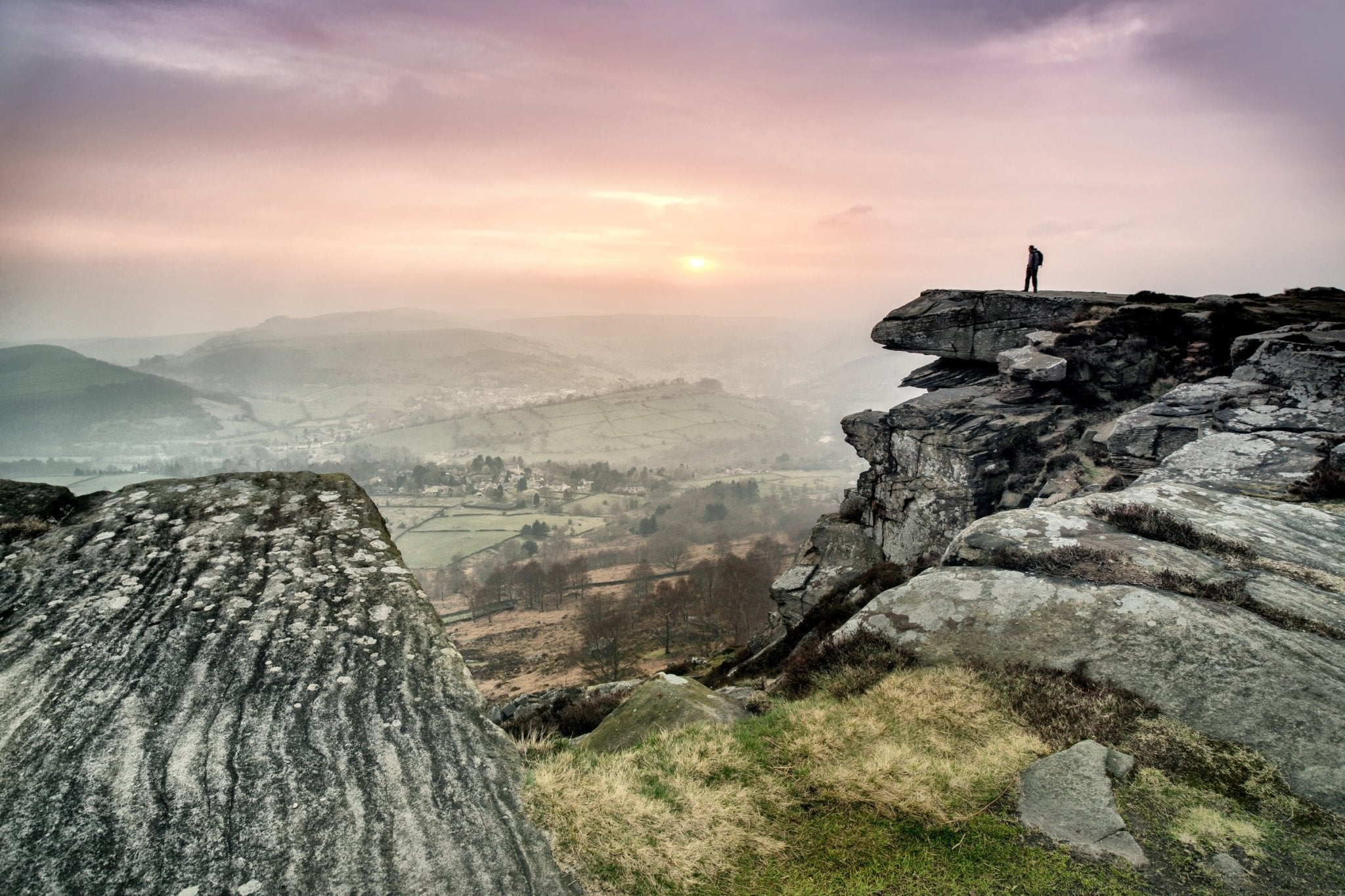- Invest in a good camera, do your research, handle the camera, and then buy some lenses, a wide angle will be crucial for vistas.
- Get to know your camera's settings and capabilities.
- Study the basics of composition.
- Plan your shoots around the best light (sunrise and sunset).
- Take advantage of different weather conditions.
- Experiment with different perspectives and angles.
- Use a tripod for stability and sharpness.
- Consider investing in a polarising filter to enhance the colors and reduce glare.
- Keep an eye out for leading lines and patterns.
- Look for interesting foreground elements to add depth to your photos.
- Pay attention to the sky and how it can enhance or detract from your photo.
- Use a neutral density filter to capture long exposures.
- Get to know your local area and the best times to visit.
- Try to capture motion in your photos (e.g. waterfalls, clouds, etc.).
- Take your time and wait for the right moment to capture the perfect shot.
- Learn how to use post-processing software to work on your photos.
- Join photography groups or attend workshops to learn from others.
- Take breaks and step back to see the bigger picture.
- Keep a photography journal to document your progress and ideas.
- Have fun and don't be afraid to experiment and try new things!
Expanding on the above:
-
Invest in a good camera and lens: Having a good camera and lens is crucial for capturing high-quality landscape photos. A camera with high resolution and a lens with a wider angle will give you more flexibility and produce better results.
-
Get to know your camera's settings and capabilities: Familiarise yourself with your camera's settings and understand how each one affects your photos. Experiment with different settings and learn which ones work best for different scenarios. Top Tip: I use Aperture Priority all the time (Av) or (A) on the camera settings dial.
-
Study the basics of composition and design: Understanding basic composition and design principles will help you create more visually appealing photos. Study the rule of thirds, leading lines, and other techniques to improve your photography skills.
-
Plan your shoots around the best light: The best light for landscape photography is often found at sunrise and sunset, when the light is soft and warm. Plan your shoots around these times to take advantage of this beautiful light. Top Tip. Stormy conditions can create amazing photos and you can shoot a good few hours before sunset whilst the sun is still high in the sky, you may get crepuscular rays (sunbeams) within your photos.
-
Take advantage of different weather conditions: Different weather conditions can create unique and interesting landscapes. Experiment with shooting in different weather, such as fog, rain, and snow, to capture unique and dramatic photos.
-
Experiment with different perspectives and angles: Don't be afraid to try different perspectives and angles. Get low to the ground, climb to higher elevations, and experiment with different viewpoints to find the best perspective for your photos.
-
Use a tripod for stability and sharpness: A tripod will help you keep your camera steady and produce sharp, clear photos. It's especially important when shooting in low light conditions or when using longer exposures.
-
Consider investing in a polarising filter: A polarising filter can enhance the colors and reduce glare in your photos. It's a useful tool for landscape photographers and can help produce more vibrant and eye-catching photos.
-
Keep an eye out for leading lines and patterns: Leading lines and patterns can add interest and direction to your photos. Look for natural lines, such as rivers, roads, and paths, to create a sense of movement in your photos.
-
Look for interesting foreground elements: Adding an interesting foreground element can help give your photos depth and perspective. Look for rocks, trees, or other objects that can serve as foreground elements in your photos.
-
Pay attention to the sky: The sky can often play a big role in landscape photos, and can either enhance or detract from the overall image. Pay attention to the sky and try to include it in your shots, especially when it's dramatic or has interesting clouds.
-
Use a neutral density filter: A neutral density filter can help you capture long exposures, which can be useful for smoothing out water or creating other interesting effects.
-
Get to know your local area: Get to know your local area and the best times to visit. Look for areas with interesting landscapes, and be prepared to revisit them at different times of the day and year to capture the best light and conditions.
-
Try to capture motion: Try to capture motion in your photos, such as waterfalls, clouds, or other moving elements. This can add energy and dynamism to your photos and make them more interesting.
-
Take your time: Landscape photography often requires patience, so take your time and wait for the right moment to capture the perfect shot. Don't be afraid to take multiple shots from different angles and perspectives.
-
Use post-processing software: Post-processing software can help you enhance your photos and bring out the best in your images. Experiment with different tools and techniques to find what works best for you.
-
Join photography groups or attend workshops: Join photography groups or attend workshops to learn from others and get feedback on your work. Networking with other photographers and learning from their experiences can be a valuable resource for improving your skills and growing as a photographer.
-
Take breaks and step back: Taking breaks and stepping back from your photography can help you see the bigger picture and avoid getting bogged down in the details. Take time to relax, reflect, and gather your thoughts to keep your passion for photography alive.
-
Keep a photography journal: Keeping a photography journal can be a useful tool for documenting your progress and ideas. Write down your thoughts, observations, and plans for future shoots to keep yourself motivated and on track.
-
Have fun and experiment: Finally, remember to have fun and don't be afraid to experiment and try new things. The best way to improve as a photographer is to keep practicing, and trying new things will help you grow and develop your skills.
Latest Product Reviews
A Proud Kase UK Partner
The use of high quality glass filters for landscape photography is quite simply game changing and will improve your resulting images. I am happy to talk filters and help you get started, start a conversation here







